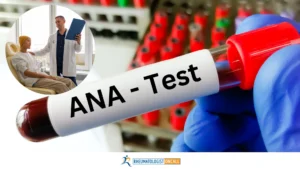SHARE
Polymyalgia rheumatica is a common form of inflammatory arthritis that can happen in older adults. If you are over 60 years old and you wake up one day with a lot of pain in your joint to the point that you cannot step out of bed, you should know about this disease. What are the most common signs of this type of arthritis that we call Polymyalgia rheumatica (PMR)?
Let’s find out.
Who is affected by Polymyalgia rheumatica (PMR) ?
Usually, Polymyalgia rheumatica (PMR) affects people over 50 years. This disease does not affect younger patients. If a young patient starts developing symptoms that look like Polymyalgia rheumatica , then it is usually another cause for their symptoms.
What are the most common signs?
Joint pain
The most common joints affected by Polymyalgia rheumatica are your shoulders (70-90% of patients) and hips (50-70% of patients). Pain may begin on one shoulder and then migrate to involve both shoulders. Usually, the shoulders start first, and the pain can affect the hips and the pelvic area in a few weeks.
More rarely, patients can also have pain and sometimes swelling in their hands, wrists, knees, or ankles. That makes the situation more problematic as it may mimic rheumatoid arthritis… will talk about this in a future video.
The pain comes from the inflammation of these joints.
These symptoms are usually present for about two weeks before the patient comes to see me as a rheumatologist.
Morning stiffness
Patients with Polymyalgia rheumatica describe a lot of morning stiffness in their shoulders, pelvis, and hip area. The stiffness involves both shoulders, and you may experience difficulties raising your arms up to make your hair or putting some things on a shelf. You may also experience difficulty getting out of bed and walking to your restroom.
The stiffness is always prolonged and will last at least 45 minutes.
As you start moving and using your arms or legs, the stiffness will improve, but the joint pain may remain persistent.
This stiffness can come gradually, but I also had patients that told me they woke up one morning and could not move.
Fever and weight loss
Before this disease start, some patients may experience loss of appetite, low-grade fevers, and a significant decrease in their weight that is not intentional. These could be signs of inflammation that precede the onset of joint pain and morning stiffness.
Elevated markers of inflammation
When I suspect inflammatory arthritis, as a rheumatologist, I will check your markers of inflammation like sedimentation rate and/or C- reactive protein. In patients with Polymyalgia rheumatica, the sedimentation rate is almost always elevated, at least over 40 mm/hr, but many times over 100 mm/hr. Sometimes the C-reactive protein is elevated.
As I said, an elevated sedimentation rate will always indicate a high inflammatory process.
There are also other laboratory tests that we do, and they can point towards inflammation, but usually, rheumatoid factor and anti-CCP antibodies (that are positive in patients with Rheumatoid arthritis) are negative in Polymyalgia rheumatica.
Headache
Headaches are a critical sign that you need to know about. I am heavily educating my patients with Polymyalgia rheumatica about headaches.
Please pay attention now!
Polymyalgia rheumatica (PMR) and Giant Cell Arteritis
Symptoms like joint pain in the shoulder and hip area, morning stiffness, losing weight, and fevers can precede the onset of headaches within a few weeks; they can mimic another more severe disease, vasculitis of the temporal arteries. We call this GIANT CELL ARTERITIS or TEMPORAL arteritis. Once again, this is a very serious disease that can cause inflammation of the brain vessels and lead to many complications, from strokes to blindness.
About 20 % of Polymyalgia rheumatica (PMR) cases can be associated with giant cell arteritis/temporal arteritis.
If you develop headaches over the temporal areas, you never had a history of headaches, or these headaches are different from what you had in the past, you should be evaluated IMMEDIATELY. If you have jaw pain, vision changes, like blurry vision, spots on your vision or a short period of losing vision, you should immediately go to the ER emergency room.
These could be signs of Giant Cell Arteritis.
Giant cell arteritis is an emergency, and if is not addressed immediately, you may lose your vision or have a stroke. Do not wait to be seen by your primary care physician or referred to a neurologist or ophthalmologist. You should go immediately.
Those are the most common five signs of Polymyalgia rheumatica (PMR). If you develop any of these signs, you should contact a rheumatologist or are welcome to check out our practice and get the help that you need when you need it the most. Rheumatologist OnCall is a telemedicine rheumatology practice that broadens access to a specialist quickly, when needed, and breaks geographical barriers. Check out the states where we are licensed to see patients in the US, and reach out to us if needed. We are happy to serve you.














